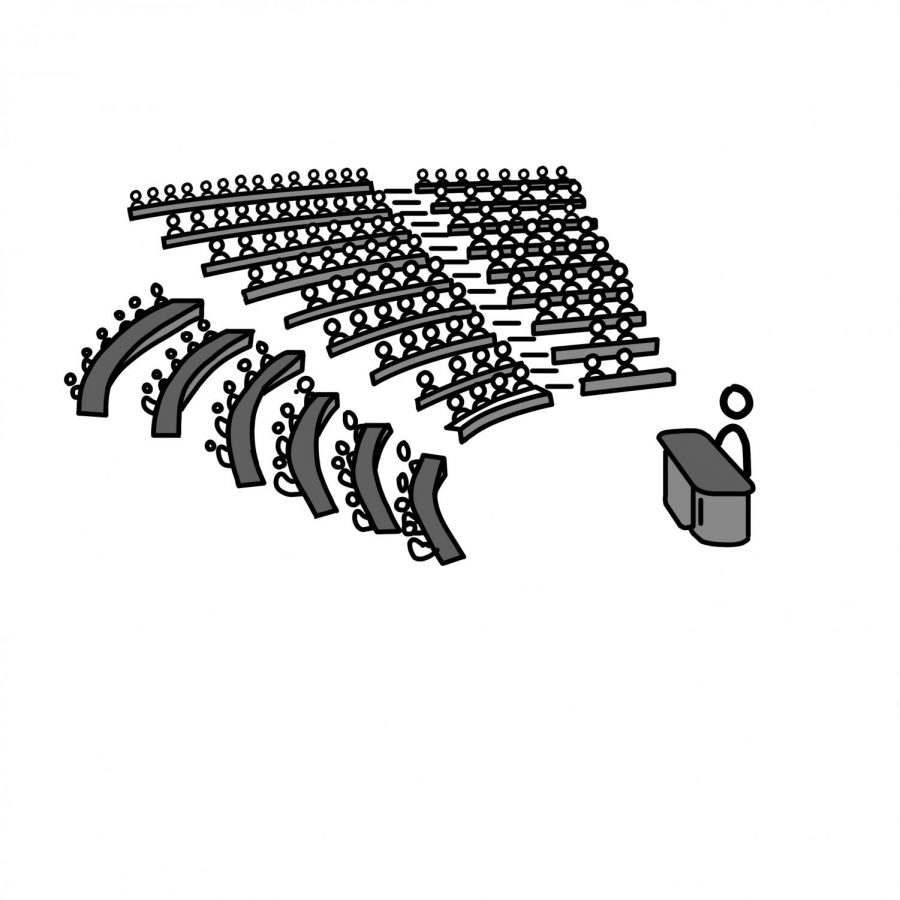As enrollment at San Diego State increases, so does the number of big lecture classes.
This is especially true for lower division and general education courses, many of which now sit upwards of 100 students.
A classroom setting where students are crammed into 100-seat lecture halls does not create effective or healthy learning environments. It makes learning more challenging.
It feels like all you are doing is temporarily memorizing information for exams and not retaining information long-term that will benefit you in the workplace. This is most applicable to general education curriculum, which has the objective of deepening and broadening students’ knowledge. Much of this information feels uninteresting or unnecessary.
When the general education courses don’t have a correlation to the career path you intend to follow, it feels like you are just there to show up to pass the class and not to actively learn.
In big lecture halls, it can be more difficult to see the board and hear what the instructor is saying. The high number of other students can be a distraction. On top of this, the focus on listening instead of collaboration makes it harder to learn the course material. Most of the learning entails looking at Powerpoints, jotting down some notes and listening to the professor lecture for an hour. This setting rarely provides students the chance to share their own comments and ideas.
Having to go over so much material to so many students, there is little room for individual-based learning and discourse. Unless students attend office hours, it is impossible to build a closer relationship with professors. Getting to know your professors is important because they can share upcoming opportunities for research projects, internships and jobs.
There have been a number of studies nationwide that show the negative impacts of larger class sizes, including one conducted by San Diego State.
The study looked at enrollment in various class sizes comparing the data from the years 2001 to 2013. The report found that 2013 enrollment in classes with less than 50 students fell to 60% to 35% and enrollment in classes with over 100 students jumped from 17% to 40%.
The study also surveyed over 600 SDSU faculty members. 85% said they noticed a negative impact on student learning due to larger class sizes and a majority felt larger class sizes lead to poorer teaching as well.
Many of the surveyed faculty stated they gave out less research-oriented assignments, shifted more towards multiple-choice based testing and they felt like they were less able to help out students who were falling behind in class. Nearly three-quarters of faculty began giving students less feedback and a majority cut back on time allocated for class discussion.
SDSU is well aware of the negative impacts larger class sizes have on students, and yet they continue to push for learning environments that fail to adequately foster student-based learning. Rather, the school continues to increase class sizes, construct huge lecture hall buildings and promote online classes. All of these are impersonalized forms of learning.
Students need to be provided with an engaging classroom environment to create enriching educational experiences. Courses should be structured to be more researched-based and have-hands on assignments that enable students to draw connections from the classroom to the real world.
The classroom should be a place for meaningful learning where students are able to flourish as intellects and as humans.
Catherine Van Weele is a sophomore studying political science and economics. Follow her on Twitter @catievanweele.








